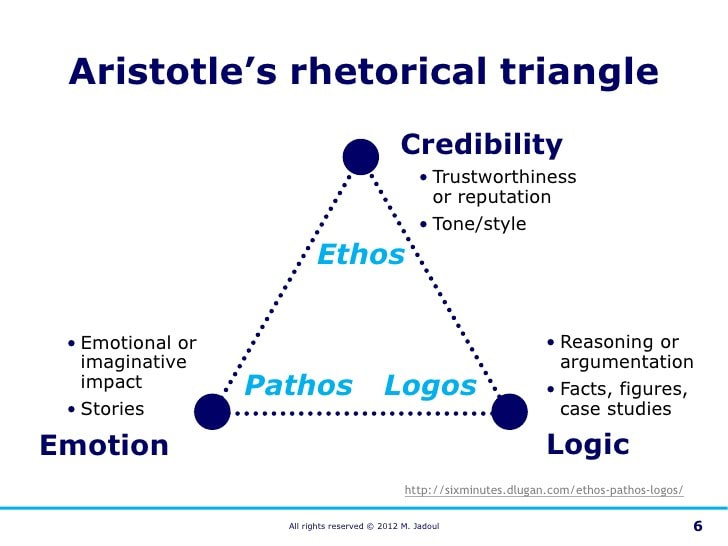

Page created by: Ian Clark, last modified on 4 August 2022. Practices of Persuasion (core topic) in Communication Skills

#Ethos pathos and logos how to
Use striking facts, statistics, and contrastsĭrawn from Andrew Dlugan at, accessed 20 January 2016 and Marie Danziger, How to be Persuasive at, accessed 20 January 2016. Pre-empt objections and counterarguments establish common groundīe real and interactive, not a talking headĪcknowledge your audience’s values and feelings Use “mental models” to create a framework Keep it simple, structured, and easy to remember Marie Danziger, a lecturer in public policy at the Kennedy School, summarizes her advice on How To Be Persuasive as: LOGOS We will study pathos in greater detail, and look at how to build pathos by tapping into different audience emotions. The goal of a story, anecdote, analogy, simile, and metaphor is often to link an aspect of our primary message with a triggered emotional response from the audience. We will define ethos in greater detail, and we will study examples of how to establish and build ethos.Įmotional connection can be created in many ways by a speaker, perhaps most notably by stories. Ethos is your level of credibility as perceived by your audience. (This isn’t about your confidence, experience, or expertise.) Your audience must know this. Keep in mind that it isn’t enough for you to know that you are a credible source. We will see why logos is critical to your success, and examine ways to construct a logical, reasoned argument. (credibility or character of the speaker)ĭoes the audience believe you are of good character?ĭoes the audience believe you are generally trustworthy?ĭoes the audience believe you are an authority on this speech topic?ĭo your words evoke feelings of … love? … sympathy? … fear?ĭo your visuals evoke feelings of compassion? … envy?ĭoes your characterization of the competition evoke feelings of hate? … contempt? Will your call-to-action lead to the desired outcome that you promise?

Is your message based on facts, statistics, and evidence? On his website, Six Minutes – Speaking and Presentation Skills, Dlugan lists questions to ask oneself: LOGOS Indeed, the editors of The Rhetoric of Western Thought: From the Mediterranean World to the Global Setting call it “the most important single work on persuasion ever written.” Dlugan says that it is hard to argue this claim most advice from modern books can be traced back to Aristotle’s foundations. Logos, ethos and pathos are the three rhetorical appeals set out in 350 BC by Aristotle in On Rhetoric: A Theory of Civic Discourse and used by many today to organize advice on public speaking and how to persuade.Īndrew Dlugan notes that many teachers of communication, speech, and rhetoric consider Aristotle’s On Rhetoric to be a seminal work in the field. … a core concept in Communication Skills and Atlas 109 Concept description


 0 kommentar(er)
0 kommentar(er)
